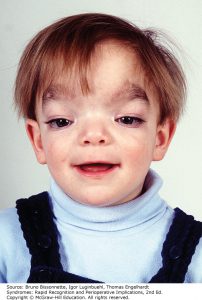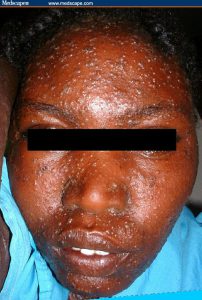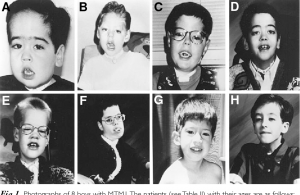Hey guys, It’s time for another blog. I had absolutely no idea what to write about so I discovered some rare diseases, and highlighted their symptoms and a few effects on humans that live their life with them. This is very different from the types of blogs I usually write but hopefully it turns out to be a good thing. hope you guys enjoy!
1) Aarskog-Scott syndrome is a genetic disorder that affects the development of many parts of the body, most commonly the head and face, the hands and feet, and the genitals and urinary system (genitourinary tract). This condition mainly affects males, although females may have mild features of the syndrome.
People with Aarskog-Scott syndrome often have distinctive facial features, such as widely spaced eyes(hypertelorism), a small nose, a long area between the nose and mouth (philtrum), and a widow’s peak hairline. They frequently have mild to moderate short stature during childhood, but their growth usually catches up with that of their peers during puberty. Hand abnormalities are common in this syndrome and include short fingers (brachydactyly), curved pinky fingers (fifth finger clinodactyly), webbing of the skin between some fingers(cutaneous syndactyly), and a single crease across the palm.) . Affected individuals can also have wide, flat feet with broad, rounded toes. Other abnormalities in people with Aarskog-Scott syndrome include heart defects and a split in the upper lip (cleft lip) with or without an opening in the roof of the mouth (cleft palate).

2) Acanthocheilonemiasis is a rare tropical infectious disease caused by a parasite known as Acanthocheilonema perstans, which belongs to a group of parasitic diseases known as filarial diseases (nematode). This parasite is found, for the most part, in Africa. Symptoms of infection may include red, itchy skin (pruritis), abdominal and chest pain, muscular pain (myalgia), and areas of localized swelling (edema). In addition, the liver and spleen may become abnormally enlarged (hepatosplenomegaly). Laboratory testing may also reveal abnormally elevated levels of certain specialized white blood cells (eosinophilia). The parasite is transmitted through the bite of small flies (A. coliroides).
When symptoms appear they may include itchy skin (pruritis), abdominal pain, chest pain, muscle pains (myalgias), and/or areas of swelling under the skin (subcutaneous). Examination by a physician may reveal an abnormally enlarged liver and spleen (hepatosplenomegaly), and abnormally high levels of granular white blood cells (eosinophilia). The adult worm (nematode) may lodge in the tissues of the abdomen and chest causing inflammation and immune reactions. This may result in inflammation of the lining of the lungs (pleuritis) and/or the membranes that surround the heart (pericarditis).

3) X-linked Myopathy with Excessive Autophagy (XMEA) is a very rare genetic condition. Autophagy is the process of breaking down damaged or unnecessary cell parts such as proteins and organelles. The most common feature of XMEA is muscle disease (myopathy) and slowly worsening muscle weakness, especially in the legs. This disorder is caused by a harmful change (mutation) in the VMA21 gene located on the X chromosome. The inheritance pattern of XMEA is X-linked, meaning that typically only males are affected and females are unaffected carriers. Signs and symptoms usually start between 5-10 years of age, but some patients do not become symptomatic until later in life. There are currently no specific treatments for XMEA. Management focuses on symptoms and may include physical therapy and exercise. XMEA was first reported in medical literature in 1988 and the VMA21 gene was discovered to be the cause of XMEA in 2013.
The most common symptom of XMEA is muscle disease (myopathy) and slow worsening muscle weakness, especially in the legs.

this is definitely an interesting topic to write about
Very informative and interesting- didn’t know these kinds of diseases/disorders existed
I love learning about this type of stuff- very interesting!
I like the informative route you took here